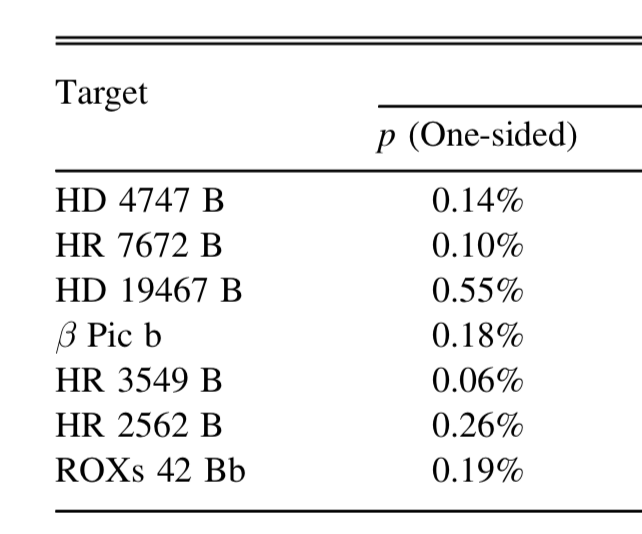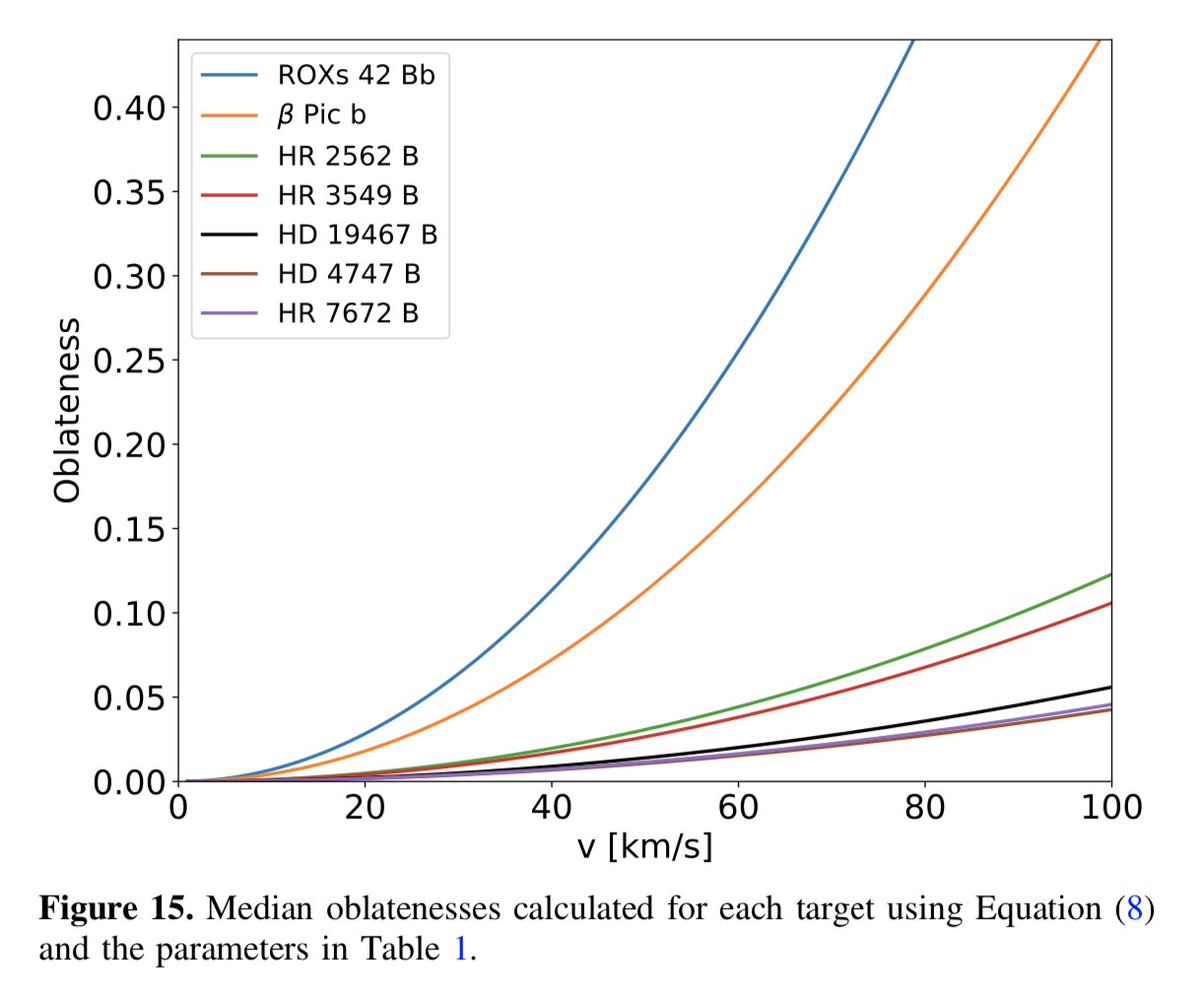Want to flag our new paper led by Rebecca Jensen-Clem and Max Millar-Blanchaer and colleagues on brown dwarf polarization with remarkable detection limits. https://ui.adsabs.harvard.edu/abs/2020AJ....160..286J/abstract
Excerpt from Table 4 with the upper limits. This is remarkable for such faint objects and points to the hard work by Rebecca and Max on this.
Brown dwarf polarization can arise from inhomogeneities (clouds, spots) or from rotational oblateness. Sujan Sengupta and I have a series of papers on the latter mechanism.
So finally by combining our polarization theory, atmosphere models, the oblateness calculation, and--most importantly--the tight upper limits, we can place limits on the rotation velocity of the targets.
In some cases the limits aren't very constraining, but in others they are. See the paper for details. In the future surveys of more objects and even tighter polarization limits will enable rotation measurements for many more objects.
Also we are working with Sagnick Mukherjee, @smastrophysics, a new first year grad student at UCSC, to enable cloudy polarization calculations for spotty brown dwarfs.

 Read on Twitter
Read on Twitter




